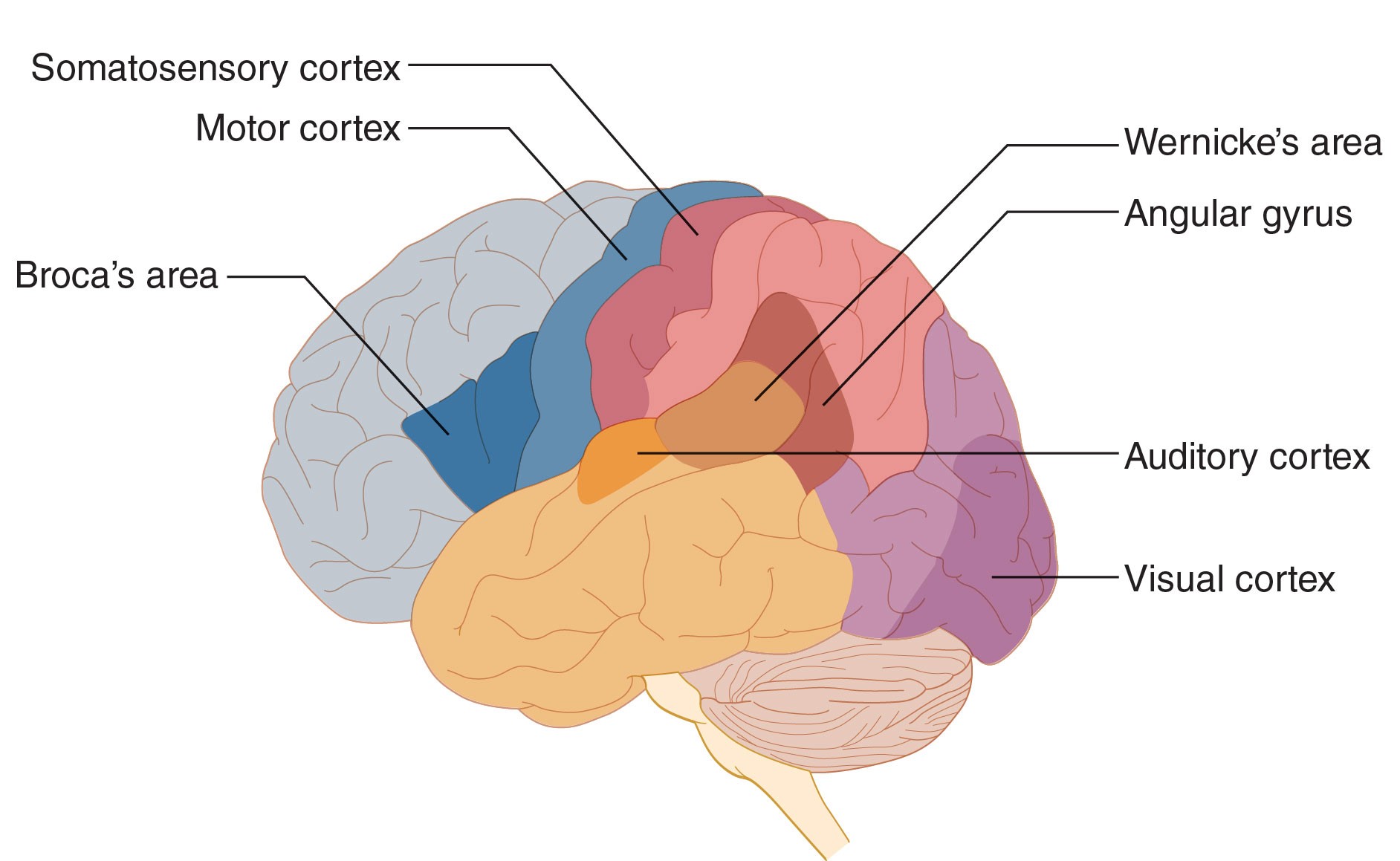Chapter 47. The Cerebral Cortex
Learning Objectives


Identify the four lobes of the cerebral cortex.
Describe the main functional areas of each lobe of the cerebral cortex.
Review
Review
Select the NEXT button to continue with the Review.

1. The cerebral cortex is a layer of tightly packed neurons that covers the outer surface of the brain’s two cerebral hemispheres. If you opened a person's skull, the cortex is what you would see.
Review
Review
Select the NEXT button to continue with the Review.
2. The cerebral cortex is structured in six thin layers, with each layer containing billions of interconnected neurons that do most of the brain's complicated processing.
Review
Review
Select the NEXT button to continue with the Review.

3. Each of the two cerebral hemispheres is divided into four lobes named for their location within the skull.
Review
Review
Select the NEXT button to continue with the Review.

4. Three of the cortex lobes contain regions specialized for the processing of sensory information from the outside world and from the body's internal organs. The occipital lobe contains the primary visual cortex, which processes information from the eyes.
Review
Review
Select the NEXT button to continue with the Review.

5. The temporal lobe contains the primary auditory cortex, which processes information from the ears.
Review
Review
Select the NEXT button to continue with the Review.

6. The parietal lobe contains a long vertical strip called the primary somatosensory cortex, which processes information from the outside world through the skin (such as touch, vibration, temperature, and pain). This area also processes internal body signals, such as position of the head and movement of the arms and legs, as well as pain in internal organs.
Review
Review
Select the NEXT button to continue with the Review.

7. The areas that process sensations of taste and smell are not visible on the surface of the brain. They are hidden deep in the fissure, or crack, that separates the temporal lobe from the frontal lobe.
Review
Review
Select the NEXT button to continue with the Review.

8. The frontal lobe contains an area that controls voluntary muscle movements. This primary motor cortex initiates the movement, but lower brain areas, including the cerebellum and pons, coordinate the muscle groups that actually perform the movement.
Review
Review
Select the NEXT button to continue with the Review.

9. The specialized areas of the cortex that produce and understand language are usually located in the left hemisphere only. Broca’s area is mainly involved in the production of language. Wernicke’s area is involved in the understanding of language. With spoken language, Wernicke’s area gets input from the auditory cortex. With written language, the visual cortex must first send the words to the angular gyrus, which converts the words to sounds that Wernicke’s area can interpret.
Review
Review
Select the NEXT button to continue with the Review.

10. Finally, the cortex contains association areas that integrate information from many brain regions to interpret the meaning of events, make judgments and decisions, and plan future actions.
Practice 1: Lobes of the Cortex
Practice 1: Lobes of the Cortex
Roll over each lobe to see a brief description of its role.
The cerebral cortex is the outer surface of the upper part of the brain. Its four lobes contain the body's ultimate control centers and information-processing areas.
receives and processes auditory information from the ears
receives and processes visual information from the eyes
receives and processes sensory information from the skin and body senses
controls muscle movement and production of speech; is involved in making plans and judgments

Practice 2: Sensory and Motor Areas
Practice 2: Sensory and Motor Areas
Roll over each area to see a brief description of its role in information processing or muscle control.
These special areas within the four lobes control voluntary muscle movement and process information from the senses.
controls voluntary muscle movements on the opposite side of the body (that is, the right hemisphere's motor cortex controls movement on the left side of the body)
processes sensations from the skin and internal organs on the opposite side of the body (that is, the right hemisphere's sensory cortex processes skin/organ information from the body's left side)
processes information from the ears, primarily from the opposite side of the body (that is, the right hemisphere's auditory cortex processes sounds entering the left ear)
processes information from the eyes coming from the opposite visual field (that is, the right hemisphere's visual cortex processes information from the left visual field)

Practice 3: Language Areas
Practice 3: Language Areas
Roll over each area to see a brief description of its role in language.
These special areas, usually in the left hemisphere, control production and comprehension of spoken and written language.
generates spoken and written language and controls mouth muscles by way of the motor cortex
processes the information from speech or writing and comprehends its meaning
is involved in reading (turns written words into an auditory code to be interpreted by Wernicke's area)

Quiz 1
Quiz 1
Drag each label to the gray area connected to the appropriate lobe of the cerebral cortex. When all the labels have been placed, select the CHECK ANSWER button.

Quiz 2
Quiz 2
Drag each label to the gray area connected to the appropriate area of the cerebral cortex. When all the labels have been placed, select the CHECK ANSWER button.

Quiz 3
Quiz 3
Match the brain structures to their functions by dragging each colored circle to the appropriate gray circle. When all the circles have been placed, select the CHECK ANSWER button.
Conclusion

